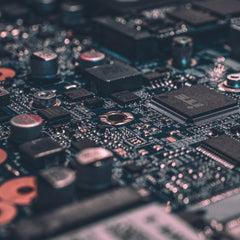When it comes to the Internet of Things (IoT), connectivity is crucial to keep in mind due to the fact that smart technology is completely reliant upon communication. There are various communication protocols and network infrastructures that can alter the way IoT technology is used as well as its level of operation.
Network topology is important to understand because it changes the way communication protocols are used. The main IoT network topologies consist of Point to Point (P2P), Star, Mesh, and Hybrid. P2P is a link between two endpoints that allow devices to communicate on a dedicated channel. Star network configurations include multiple nodes that connect to a central device; each node can’t directly communicate with each other, only through the central device. These networks are easy to setup but if the central device fails than the network will fail. Mesh networks consist of multiple nodes, each connecting to each other. This can be used for establishing consistent connection but there is a high amount of redundancy. Hybrid networks are simply combinations of different topologies, but they are often very complex and expensive to setup.
The different communication protocols can be utilized in an effort to maximize efficiency and optimize IoT technology for any environment. The common types of communication protocols include Wi-Fi, Thread, ZigBee, Bluetooth, RFID, and NFC.
Wi-Fi: This is an extremely common communication protocol that is essentially everywhere in our lives. Wi-Fi makes it extremely easy to add/remove devices, has a lot of range, and is able to penetrate walls and other obstacles. That being said, there is lower bandwidth due to the lack of wired connection, and Wi-Fi networks are not the most secure. It is perfect for saving power and having quick and efficient communication. Wi-Fi is a star-based network; the communication goes from various wireless nodes to the wireless access point (WAP).
Thread: Thread is a communication protocol that is very reliable, consumes minimum power, and enables machine to machine (M2M) communication. In fact, it was designed for the purpose of connected home applications. The Thread protocol can use three main device types including border routers, sleepy end devices, and routers/router-eligible end devices. It is primarily based on IP, making it extremely simple to connect with other IP-based networks. Unlike Wi-Fi, if a single point goes out, the whole network won’t go down; it supports a full mesh-based topology. It is also a very secure communication protocol. However, it is not very good for DIY consumer installation in homes due to its complexity.
ZigBee: ZigBee is very similar to Thread as it is created by an alliance of several companies in an effort to maximize home and industrial automation. It fulfils the requirements of a mesh network, but can support star and tree topologies as well. The three main devices defined in ZigBee protocol are different than Threads, they include ZigBee coordinator, router, and end device. It is essentially the same thing as Thread, but it does come with some additional features. ZigBee RF4CE was developed to be a universal remote for the smart home, and ZigBee Green Power is a mode that ensure extremely low power consumption. A downside of this protocol is the fact that it has short range and low data speeds.
Bluetooth: Bluetooth utilizes the 2.4GHz spectrum in the ISM band. It is an ad-hoc type of network, thus enabling M2M communications. Bluetooth Low Energy (BLE) is the current type being used within the IoT world, but there are three different branches of Bluetooth technology. Bluetooth Classic is the traditional type of Bluetooth, which has a higher throughput and is primarily used for transmitting files. Bluetooth Smart is essentially the same thing as BLE. It transmits information and was developed for applications with low-duty cycles. It is also important to note that Bluetooth Smart cannot communicate with Bluetooth Classic. Bluetooth SmartReady is the last classification type; these devices are essentially the devices that act as hubs, such as computers and phones. This type of Bluetooth supports both Classic and Smart.
RFID: Radio-Frequency Identification (RFID) is used as a communication method for being able to identify and track various devices wirelessly. This is an extremely simple communication method that can be used for a wide range of applications. RFID tags are able to read and write information and can be either passive or active. If they are active, they have an on-board power source, giving them more range and the ability to search for a reader. Passive tags don’t have an internal power source but can be activated when touched against a reader. Readers are purely used for receiving information from tags.
NFC: Near-Field Communication (NFC) is a communication protocol similar to RFID, but there are several things that differentiate the two. NFC-enabled devices are able to communicate information from one device to another simply by tapping the two device together. This is particularly useful in smartphone technology because it reduces the amount of time and effort in connecting devices. NFC is an extremely short-range communication method, but it is probably the most power efficient protocol. NFC devices can either be the initiator (the device that starts the communication) or a target (the device that receives information from the initiator).
The IoT is continuing to grow at a rapid pace, making it more important than ever to understand the best applications of various communication protocols. Some of them are designed with the IoT in mind, while others are not. As the technology continues to grow, it is reasonable to expect more efficient uses of existing protocols in addition to more powerful, new protocols.
For more information, explore this article from SparkFun Electronics.






